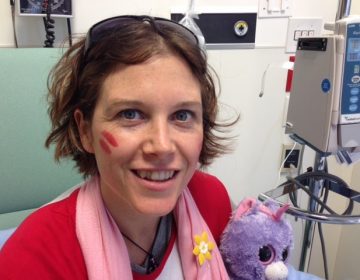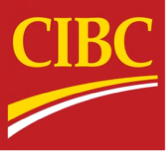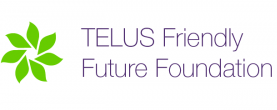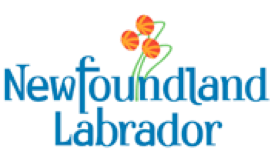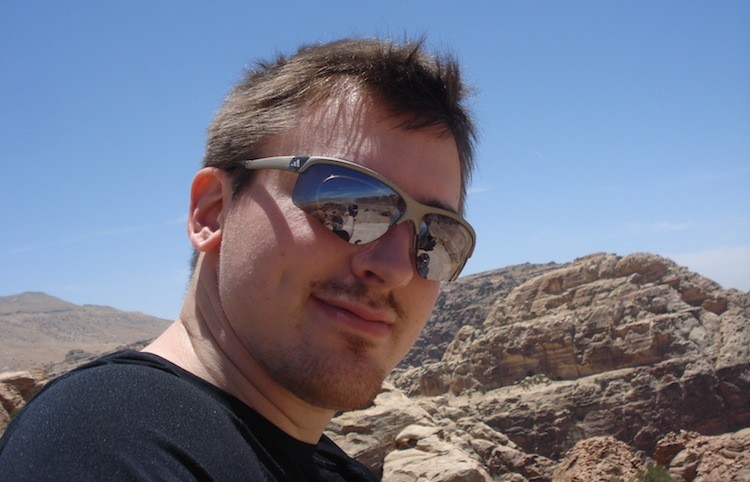
Denis Raymond
Sadly, Denis died in July 2022. We greatly miss his friendship, knowledge, passion, and presence. We hope this profile helps you know him a little bit, and inspires you to get all you can out of life.
I’ve been many things in my life — a son, a brother, a student, a teacher, a mentor — but never in my short 26 years of life would I have imagined adding “brain cancer patient” to the list. Before getting into that, let me first describe to you this 26-year-old adventurer.
Pre-diagnosis
Having completed my studies early in life, I was determined to seek out a life worth living. This pursuit brought me to many places — south to Costa Rica and California, north to Quebec and to the Northwest Territories, and across the globe to Asia and the Middle East. I sought to enrich my life through travel, but though I also sought to touch the lives of many children in need, I often found myself taking more than giving. After living the nomad life for five years, I realized that I was more often lost than found. So, in the fall of 2012, I decided to head home to reconnect with my family in Ottawa. I soon found some stability in the form of wonderful employment at a small private independent learning center where I’ve been ever since.
Headaches and surgery: Pre dx
I was never one to buy into the whole “things happen for a reason” thing, but my decision to return to Ottawa turned out to be the best decision I’ve ever made. In May 2013, Close to the end of the school year, the headaches began. Increasingly severe, it culminated into 24 hours of hiccups. The severity of the situation was finally discovered — I had a mass the size of a baseball in my right frontal lobe. Apparently, despite all the intense pain I was going through, I still managed to crack a few jokes, like telling my sister that I had a “religious congregation” in my head. In any case, I didn’t have time to process what was happening as I was to have surgery the next day. The next thing I remember was the sudden appearance of my good friend, Geoff, who was then living in Halifax, and my then long-distance girlfriend, Ann, who was then living in Waterloo, at my bedside. I was in no state to converse with them, but the sheer sight of them was enough to spark my survival instinct; I would survive this no matter what.
Surgery and recovery
The next thing I knew, I was waking from surgery. My family and I were informed that the surgery was deemed to be a successful debulking of the tumour, and that the specimens were sent off to the lab to get analyzed. My sister pointed out that I was drooping a bit from my left side, but thankfully, that was the extent of the neurological issues, and the drooping rectified within a few days. At this point, we were flying on cloud 9 — the surgery was successful and the preliminary reports hinted that the probability of the tumour being a GBM was very low. Three days post-surgery, I was back out in the world, though it took me a while to rebuild most of my strength. My partner, Ann, and I moved back in with my parents (and though I love and appreciate them very much, it was the LAST thing I wanted to do at 26).
Diagnosis and initial reaction
On June 10th 2013, we stepped into the neurosurgeon’s office for what was to be our last meeting together. It was then that he dropped the GBM-bomb on us. Glioblastoma Multiforme (or multiformé, if you want to sound fancy). My first thought was “at least it sounds really cool!” immediately followed by, “Wait, I or IV — which one’s the bad one again?” It was not until we drove away and I pulled out my phone that gravity kicked in.
Diagnosis and post-initial reaction
I was in shock. Everywhere online was death, death, and more death. For every “GBM-survivor story,” there was an update indicating they “passed away.” The stats were shocking; medians for overall survival of 15 months, 12 months, nine months, six months. I spent many sleepless nights desperately searching for some kind of hope. Survival mode. The feeling of a complete loss of control scared the hell out of me.
Post-surgery treatments and weighing options
I didn’t weigh too many options at the time — I was told that I would begin the standard protocol in three weeks: Six weeks of radiation therapy with adjuvant temozolomide, followed by the standard 5/23 schedule for chemotherapy. I was immediately rushed into a clinical trial involving a radiosensitizer, on which I was randomized to the control group (yes, I knew that I was).
(PLEASE NOTE: I am not advocating for people to do this, clinical trials do need patients, and even control groups).
The knowledge that I was in a control group turned out to be a blessing in disguise, because, since I knew that I had not received any additional treatment, I was able to abandon the clinical trial for the Novocure trial, on which I’ve been ever since. Using the Novocure device took some getting used to, but I eventually successfully adapted to the device, and it to me. For those of you not familiar with the trial, it involves the use of a non-invasive medical device alongside the standard 5/23 temodar. The trial requires me to wear the device almost 24/7. It was a great decision, since my remaining tumour seems to be responding very well. Nevertheless, I still felt a lack of personal control, which I found to be very uncomfortable.
Adapting
I regained that feeling of control over time by becoming more knowledgeable, by focusing on the positive rather than the negative, and by making changes in my lifestyle that were far overdue. Up until my surgery, I never quite got over the student diet of beer and ramen. You’ll be happy to know that my fridge is now always stocked with a variety of fruits and vegetables. I’ve also been fortunate enough to have found such a flexible and understanding principal who has since brought me back into the school as a full-time high school math and science teacher, despite the challenge of being away for a few days each month when I’m on chemo.
Reaching out
I also reached out to the many available resources and programs at the Maplesoft Centre on Alta Vista drive, and at the Cancer Center. I was also connected to Young Adult Cancer Canada, which has been an excellent source of support. And of course, the Brain Tumour Foundation of Canada provided many tools, such as the Brain Tumour Patient Navigation pamphlet, and the local support groups, which I frequently attend alongside my partner and my parents. And, of course, I would not be the positive person I am today if it were not for the tremendous support of my partner, Ann; my close friends Geoff and Alex; my colleagues and students; my sister, Andree; and my wonderful parents, Ken and Francine.
Moving forward
Thinking ahead is hard for a GBM patient, but I like to think that my life has changed for the better since diagnosis, and I will continue moving forward. I try to give back to the wonderful people that have touched my life since in the summer of 2012. I hope to continue getting opportunities to share my story and reach out to those who might be missing a much-needed connection.


